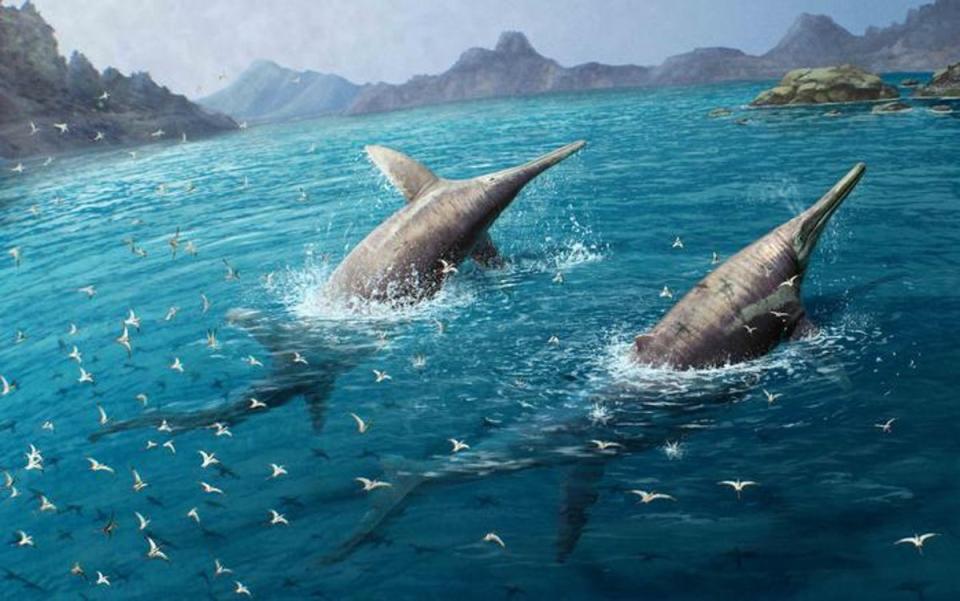Eleven-year-old girl’s fossil find leads to discovery of largest known sea reptile

A fossil find by 15-year-old Ruby Reynolds in the UK has led to the discovery of a new giant sea reptile species that could have been over 25m in length.
In May 2020, Ruby, who was then 11-years-old and her father Justin Reynolds found the first pieces of the sea reptile’s jaw bone on the beach at Blue Anchor, Somerset.
The fossilised remains of a second gigantic jawbone measuring over two metres long was later found, followed by the discovery of additional pieces of the same jaw over time which fit together “like a multimillion-year-old jigsaw,” according to researchers.
“When Ruby and I found the first two pieces, we were very excited as we realised that this was something important and unusual,” Mr Reynolds said.
The fossil search ended with the last piece of bone recovered in October 2022, leading to the discovery of a new giant species of ichthyosaur – a type of prehistoric marine reptile – that would have been about the size of a blue whale.
Scientists have named the new species Ichthyotitan severnensis, meaning “giant fish lizard of the Severn”.

“This new specimen is more complete, better preserved, and shows that we now have two of these giant bones that have a unique shape and structure,” Dean Lomax, a palaeontologist at The University of Manchester, said.
“I am very proud to have played a part in a scientific discovery like this,” Ruby, now a published scientist at 15, said.
Further analysis of the bones revealed that they are around 202 million years old, suggesting the giant reptile likely terrorised the seas at the end of the Triassic Period in a time known as the Rhaetian when the dinosaurs walked on land.
Rocks above these fossils also reveal a cataclysm known as the Late Triassic global mass extinction event.
Following this mass die-off, giant ichthyosaurs likely went extinct, suggesting the bones recovered from the beach represent the very last of their kind.
The new species is also unique among those known to science.
Researchers expressed intrigue that the two bones part of the finding appear about 13 million years after their latest geologic relatives, including Shonisaurus sikanniensis from British Columbia, and Himalayasaurus tibetensis from Tibet.

 Yahoo News
Yahoo News 
